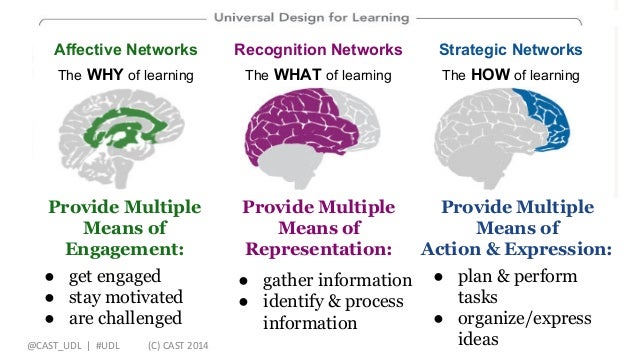Definition
Universal Design for Learning (UDL) is a way to meet the needs of all diverse learners and help them learn to their full potential. The intent for this way of learning is to break down obstacles that students may face when they come from different backgrounds and different ways of learning. UDL includes all students regardless of race, gender, disability, etc.
Application in the Classroom
It is important as an educator to find different methods of teaching to help the students learn because each student learns in a different way. UDL is a tool that should be used in every single classroom because it gets rid of barriers that can be unintentionally caused in the classroom. As a teacher, it is important to know that your classroom will have many types of learners with obstacles that may arise. UDL helps teachers understand the obstacles and develop lessons that differentiates for students in the classroom.
Resource
According to the UDL Center, Universal Design for Learning is organized around three learning networks of the brain: affective networks, recognition networks, and strategic networks. The three networks are described below:

Reference
TAKE A TOUR: LEARN ABOUT UNIVERSAL DESIGN FOR LEARNING. (n.d.). Retrieved April 12, 2018, from http://www.udlcenter.org/aboutudl/take_a_tour_udl
No comments:
Post a Comment